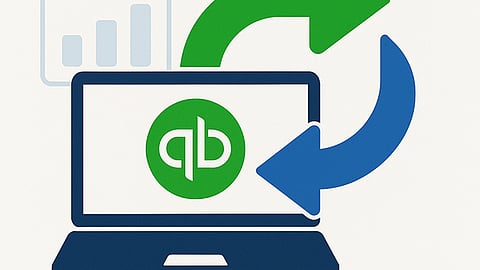Seamless Financial Transitions: Mastering QuickBooks Data Migration for Growing Businesses
As businesses scale and operations expand, one thing becomes clear: outdated financial systems simply can't keep up. The need for streamlined, accessible, and intelligent accounting software is no longer optional—it’s a necessity.
That’s where QuickBooks comes into the picture. Known for its robust features and user-friendly interface, QuickBooks has become the go-to accounting solution for small to mid-sized businesses. However, switching to a new financial system isn't as simple as flipping a switch.
For companies making the leap, QuickBooks data migration plays a pivotal role in ensuring a smooth, error-free transition that safeguards years of critical financial data.
Whether you’re upgrading from spreadsheets or transitioning from another software like Xero, Sage, or FreshBooks, migrating to QuickBooks requires strategy, precision, and expertise. In this guide, we’ll explore how businesses can master data migration to QuickBooks—ensuring financial continuity, data integrity, and operational peace of mind.
Why Businesses Choose QuickBooks
Before diving into migration, it’s worth understanding why QuickBooks is such a sought-after solution in the first place. From automatic transaction syncing and invoice creation to payroll management and inventory tracking, QuickBooks offers an all-in-one financial toolkit.
Its scalable nature makes it ideal for startups and growing enterprises alike. Cloud functionality allows business owners and accountants to collaborate in real-time, from anywhere in the world—something that’s become increasingly essential in a hybrid or remote work environment.
The real magic, however, lies in QuickBooks’ ability to centralize and simplify business finances. But to harness that power, you must first move your existing data over—and do so correctly.
Understanding the Stakes of Data Migration
Data migration isn’t just about copying information from one platform to another. It's about preserving the story of your business—every invoice, payroll record, customer detail, and tax return. Done poorly, it can lead to mismatched accounts, duplicate entries, or worse—missing data that affects compliance and reporting.
When transitioning to QuickBooks, companies often underestimate the complexity involved. Migration typically includes:
Chart of accounts
Customer and vendor records
Open invoices and bills
Employee payroll history
Bank transactions and reconciliations
Inventory details
That’s why a thoughtful migration plan is essential, especially for businesses with complex or high-volume data.
Planning for a Smooth QuickBooks Migration
Here’s a strategic approach to ensure your QuickBooks data migration goes off without a hitch:
1. Audit Your Current System
Before moving anything, assess the data you’re working with. What do you need to keep? What can be archived? This is a great time to clean up duplicates, outdated records, or incomplete entries.
2. Choose the Right QuickBooks Version
QuickBooks offers various versions—Online, Desktop Pro, Premier, and Enterprise. Each serves different business needs. For example, service-based businesses might benefit from QuickBooks Online, while product-based businesses with extensive inventory might prefer Desktop Enterprise.
3. Back Up Existing Data
Never skip this step. Even if you’re confident in the migration process, having a clean, secure backup ensures that you can restore your records if something goes wrong.
4. Work with Experts
Unless your internal team is experienced in accounting software migrations, this is one area where professional help can be invaluable. Experts not only minimize downtime but also know how to map data fields accurately, maintain formatting, and troubleshoot issues on the fly.
Common Challenges and How to Avoid Them
Even with the best intentions, migrations can hit roadblocks. Here are some of the most common hurdles—and tips on how to avoid them:
Incomplete or corrupted data exports: Make sure your current software exports data in a compatible format (like CSV or Excel).
Incorrect field mapping: This occurs when information from the old system is assigned to the wrong fields in QuickBooks, leading to reporting errors.
Loss of historical data: Some platforms only allow current-year data to be migrated. Plan ahead if you need access to prior years.
Data duplication: Be cautious during import to avoid double entries, which can throw off reconciliation and reporting.
The good news? These issues can almost always be avoided with proper planning and expert oversight.
Post-Migration: What Comes Next?
Once your data is successfully moved, the journey doesn’t end there. You’ll need to:
Run trial balances to ensure accounts match your previous records.
Test critical workflows, like payroll processing or invoicing, to make sure everything functions as expected.
Train your team on the new system, even if they’ve used QuickBooks before—especially if you’re switching from Desktop to Online (or vice versa).
Schedule regular backups and updates to maintain data integrity moving forward.
Most importantly, don’t just “set it and forget it.” Continue to monitor your financials closely for the first few weeks to catch and correct any discrepancies early on.
Final Thoughts
Data is the lifeblood of any business, and financial data sits at the very heart of it. A poorly executed migration can create more problems than it solves, but a strategic and well-managed transition to QuickBooks unlocks powerful new efficiencies and insights.
For growing businesses, mastering the QuickBooks data migration process isn’t just a technical step—it’s a strategic one. It lays the groundwork for better financial control, more accurate reporting, and future-ready operations.
Inspired by what you read?
Get more stories like this—plus exclusive guides and resident recommendations—delivered to your inbox. Subscribe to our exclusive newsletter
Resident may include affiliate links or sponsored content in our features. These partnerships support our publication and allow us to continue sharing stories and recommendations with our readers.

